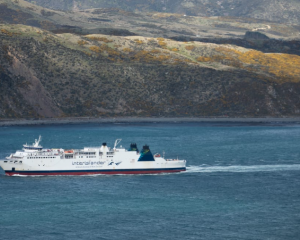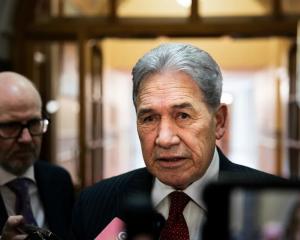The widower of a woman who initially survived the CTV building collapse but died before she was rescued has today has criticised a disjointed rescue mission which had "more chiefs than indians".
Dr Tamara Cvetanova lost the tips of four fingers but was otherwise unscathed, trapped in a void between the pancaked third and fourth floors of the Christchurch office block.
In the aftermath of the February 22, 2011 earthquake disaster, which claimed 115 lives, her husband Srecko 'Alec' Cvetanov managed to speak to her six times via cellphone.
She described her location and, after he clambered on top of the debris of twisted steel and shattered concrete, he was able to tap and receive taps back to locate where she was.
Dr Cvetanova could even hear her distraught husband's shouting, a coroner's inquest was told today.
But an increasingly frustrated Mr Cvetanov could not identify who was in charge of the rescue operation to pass on the potentially life-saving information.
Three separate police officers didn't know who was co-ordinating the rescue, with one officer saying there were "more chiefs than indians", Mr Cventanov said.
He was giving evidence at a coroner's inquest into the deaths of Dr Cvetanova of Serbia, Cheng Mai of China, Japan's Rika Hyuga, and Jessie Redouble, Emmabelle Anoba, Ezra Medalle, Reah Sumalpong and Mary Amantillo, all from the Philippines.
All were King's Education School students and survived the collapse but could not be rescued from the wreckage.
Mr Cvetanov became upset today when he explained why he wanted an inquiry into his wife's death.
The father-of-two wanted to know her exact cause of death, but also wanted the world to learn from the tragedy.
"I want... all the rescue services in New Zealand to learn from Tamara's death so that somebody else does not die in similar circumstances in the future, here or abroad."
Mr Cvetanov wanted further answers from the coroner because he was unhappy with responses from police after asking for her cause of death.
"The police only ever told me that Tamara's body was smashed, broken and burnt, and that the earthquake caused her death. That is not true - the earthquake did not."
She survived for at least 12 hours after the quake, he said, and he wanted to know whether she died because of the fire and smoke which engulfed the building after its collapse, or if she was crushed when rescuers tried to "de-layer" the rubble using heavy machinery.
However, Mr Cvetanov didn't blame digger operators for causing any deaths by trying to lift concrete slabs and steel beams to search for survivors. Instead he praised them for trying.
Mr Cvetanov first spoke to his wife by cellphone at 10.48pm - almost 10 hours after the collapse.
They spoke several times until 11.25pm when she turned her cellphone off to save battery.
At 12.50am, she turned her phone on again and dialled 111.
She was not heard from again.
Mr Cvetanov questioned why the rescue efforts were halted on February 23, only to resume the following day.
"I don't understand that flip-flop," he said.
Urban Search and Rescue (USAR) technician Ian Penn told the inquest how he got a "live hit" when searching for survivors.
He'd yelled and tapped on one patch of debris and got an instant reply. He repeated it three times, and got three responses.
"It sounded so close and right below me," he said.
USAR workers cut a hole through the layers of concrete to get to the survivor, but only two corpses - a male and a female - were found.
The inquest, before Coroner Gordon Matenga, continues tomorrow.












